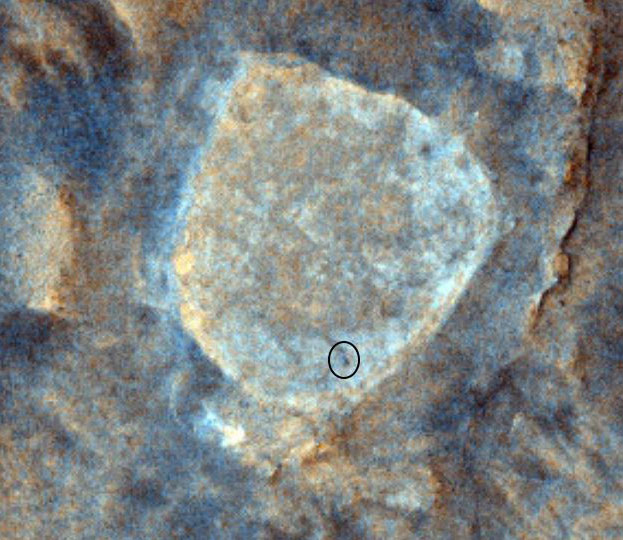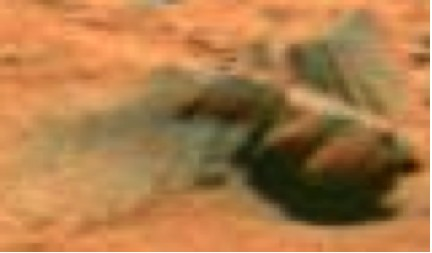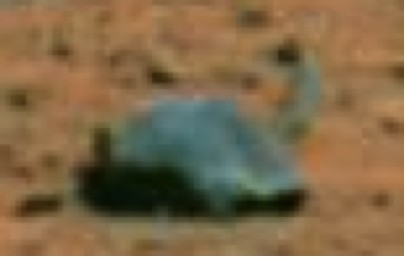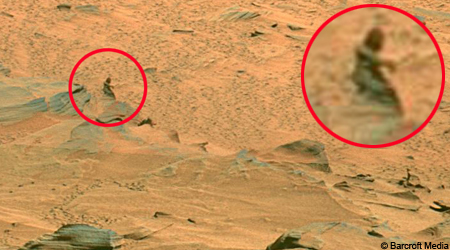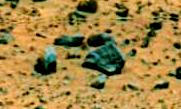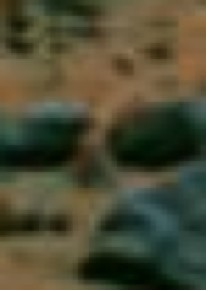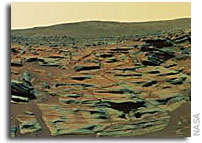The president and founder of MARS, Andrew D. Basiago, who discovered life on Mars in 2008, told the compelling story of how he found numerous images in photographs taken by NASA’s Mars Exploration Rover Spirit that reveal that life exists on Mars.
Alfred Lambremont Webre, the chairman of MARS’ board of advisors, then set out MARS’ bold agenda for disclosure about life on Mars, including a public education campaign and a Freedom of Information Act (FOIA) lawsuit seeking release by the US government of its secret documents pertaining to Mars.
2008: The year that life was discovered on the Red Planet
Basiago, a lawyer from Washington State educated at UCLA and Cambridge, published a paper entitled The Discovery of Life on Mars in 2008 that is the first work to prove that Mars is an inhabited planet and that achieves over 50 “firsts” in science.
On behalf of MARS, he then sent his landmark paper to the National Geographic Society, with a letter asking its president to publish his findings in National Geographic as a major discovery in natural history.
He showed the convention dozens of photographs of the life forms and ancient artifacts that he has found in NASA images PIA10214 and PIA11049, which are westward and southward panoramas that Spirit took from the Home Plate Plateau in 2007 and 2008.
These NASA photographs, taken in the Columbia Basin of the Gusev Crater, are “a cosmic treasure trove of the humanoid beings, animal species, carved statues, and built structures on Mars that reveal that the Red Planet has been a harbinger of life for eons and is inhabited today,” Basiago told the audience.
“From my perspective, the question that now confronts us is not ‘Shall we permit the belief that Mars is inhabited?’ But rather, ‘How shall we think about it, now that we have knowledge that another planet in our solar system harbors life?’”
My favorite Martians: Five humanoid species
The five types of humanoid beings thus far identified on Mars include: human beings, like those on Earth; beings with bulbous heads and spindly bodies, like the alien beings found in the UFO literature; transparent beings, like glass totems; forms that are all head; and hybrids that combine human traits with insect and lizard ones.
The hybrids include such odd creatures as the Scorpion Man, whose bright turquoise color matches the bright turquoise rocks of Mars. The image of the Scorpion Man prompted a clamor of recognition from the audience when Basiago showed his photographs of life forms on Mars that have never been seen before on Earth. “I see it! I see it!” one woman exclaimed excitedly.
Biodiversity goes cosmic: The Martian menagerie
The animals on Mars include species that
presently exist on Earth, such as elephants,
platypuses, horses, cows, frogs, turtles, slugs,
snakes, and snails; animals that once existed on
Earth but are now extinct, such as plesiosaurs,
which are ubiquitous on Mars but did not survive
the K-T extinction on Earth; and animals that
have never existed on Earth but combine the
traits of two or more Earth species.
Recently, Basiago discovered a primate on Mars
that he named the Sendak in honor of author
Maurice Sendak, whose classic children’s book
Where the Wild Things Are (1963)
presages some of the life forms that he has
found on Mars.
The discoverer stated that he is naming species
on Mars so that today’s schoolchildren can
relate to them, because they will constitute the
first generation of Mars explorers.
The Mars-Egypt connection
PIA10214 contains images of artifacts from
an ancient civilization on Mars that had a
connection to Ancient Egypt. One of the images
Basiago has isolated from
PIA10214 is a sarcophagus shaped like a
king. He is wearing a conical hat like the one
worn by Nefertiti on the iconic bust of her that
Ludwig Borchardt found at Amarna, Egypt in 1912.

One theory about the connection between Ancient
Egypt and Ancient Mars states that the two
planets were once verdant and shared a common
human culture, when elements of the Vela
supernova entered the solar system around 9,500
BC, fracturing Mars and devastating its
ecosystem, while impacting Earth and ending the
great maritime civilization on this planet that
Plato refers to as “Atlantis.”
Copies of
The Discovery of Life on Mars,
Basiago’s letter to the
National Geographic Society, and his other
MARS research papers are available at
www.exopolitics.com.
Webre: Founder of exopolitics champions
Mars disclosure
After making his discovery of life on Mars,
Basiago teamed up with fellow lawyer Webre to
lobby for disclosure by the US government that
life exists on Mars and to foster the
international environmental law and policy
development that is now needed to protect it.
According to Webre, NASA is staging a
disinformation campaign to hide the evidence of
life on Mars. It is doing so by altering the
scale, color, and brightness of its images from
Mars and by announcing minor discoveries on Mars
that mask major ones.
NASA’s goal, he said, is to comply with the
decree set by the
CIA’s Robertson Panel of 1952-53, which
required US intelligence agencies, including
NASA, to “debunk” evidence of extraterrestrial
life.
Webre is a veteran of the extraterrestrial
disclosure movement. He is the author of
Exopolitics, a book credited with
founding the science of relations between our
human civilization and other intelligent
civilizations in the Universe.
It was as a futurist at SRI that Webre, a
Fulbright Scholar educated at Yale, designed an
alien-human communication study for the
Carter White House in 1977. Today, he is the
International Director of the
Institute for Cooperation in Space (ICIS)
and a co-author of the
international treaty banning weapons in
space.
“Now that we have proved that life exists
elsewhere in the Universe, humanity’s planetary
quarantine has ended,” Webre stated.
“We must now act in accordance with the
Exopolitics model that the Universe has
intelligent, evolving civilizations, operating
under universal law, with governance systems,
mediated by Universe politics, and agree that
such a model must guide how we deal with Mars.”
Protecting Mars from visitation by
human beings from Earth
The crusading lawyers contend that Mars has a
beautiful environment worthy of international
protection.
The solar system catastrophe that befell Mars
left it with a fragile, post-collapse ecology
that will be vulnerable to harm by visitors from
this planet.
The Mars missions planned by the Earth’s
space-faring nations – presently the United
States and Russia, but one day including Japan,
China, India, and the ESA – could do
irreversible harm to Mars’ life forms and
ancient artifacts.
Basiago and Webre are advocating that the
Precautionary Principle be applied to Mars’
environ ment
and the Prime Directive to its civilization.
ment
and the Prime Directive to its civilization.
The space-faring nations will be asked to
examine Basiago’s evidence of life on Mars,
acknowledge that life exists on Mars, and agree
that Mars should be placed under a UN
protectorate administered in consultation with
the nations visiting Mars.
Webre noted that
UN General Assembly decision 33/426 (1978)
provides authority for the establishment of an
international agency that would coordinate
terrestrial relations with the civilization that
exists on Mars.
MARS: Coming to a group of Earthlings
near you
MARS is now preparing to take its NASA-derived
photographic evidence of life on Mars and its
proposals to protect Mars to university
campuses, churches, and civic groups.
Basiago and Webre have produced a fascinating
90-slide Power Point Presentation entitled
The Discovery of Life on Mars: Uncovering a NASA
Cover-up and begun delivering it in
90-minute lectures at speaking engagements
around the world.
The presentation includes never-before-seen
images showing bizarre life forms and
breathtaking ancient artifacts on Mars,
discusses the implications of the discovery of
life on Mars, and tells how the discovery is
causing a paradigm shift in human thinking.
It then presents a thoughtfully crafted agenda
in law and public policy that is responsive to
life on Mars and a situation that humanity has
never confronted before in its history – our
first contact with another inhabited planet in
the Cosmos.
Basiago will be presenting MARS’ convincing case
for life on Mars at the
ECETI conference in Washington State over
the July 4th weekend, and Webre will be
presenting it at the
European Exopolitics summit in Barcelona,
Spain on July 25th-26th.
